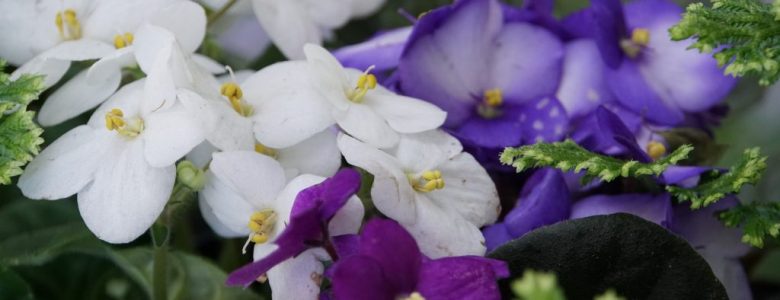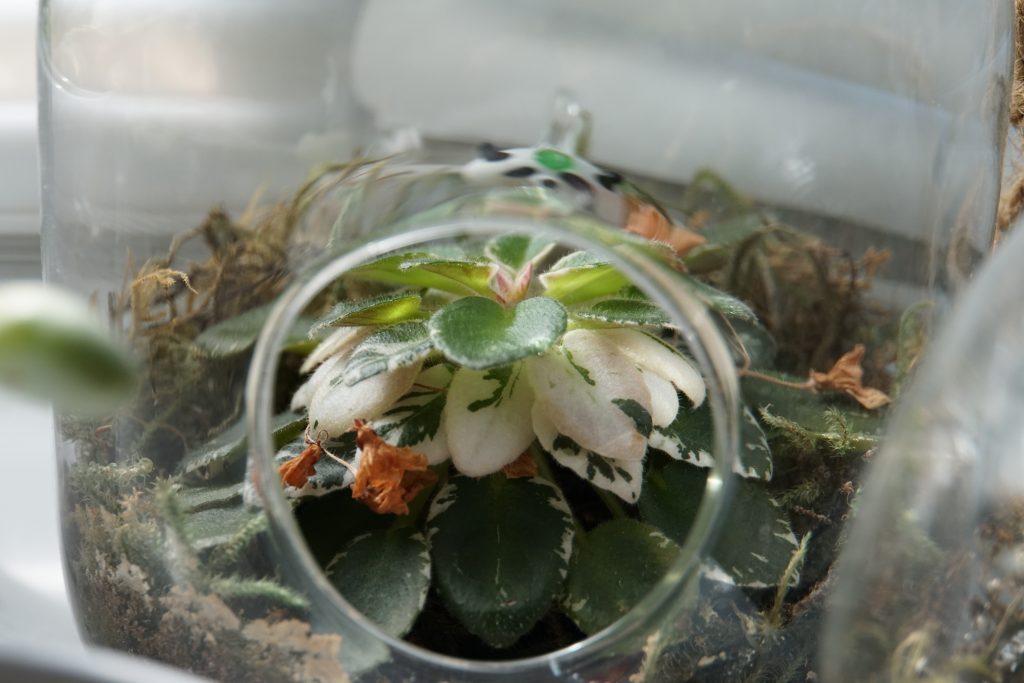March 22, 2019
Gardening Guides: African Violets

By: burgundy bug
African Violets in bloom
Source: African Violets | Penelope Peru Photography P3
African Violets (Saintpaulia Ionantha) are one of the most common, delicate, colorful houseplants that have been coveted by casual gardeners and botanists alike for over 50 years.
While new gardeners are generally cautioned against experimenting with African Violets until they’re a bit more experienced, they are not as difficult to care for as some may assume.
A Bit of Context…
African Violets were first discovered by German colonial Baron Walter Freiherr von Saint Paul-Illaire in Tanzania (formally known as German East Africa) in 1892, according to Encyclopedia Britannica. To this day, they are native to higher elevations in the tropics of East Africa.
Although African Violets decorate the desks and countertops of offices and homes around the globe, National Geographic reports they are among the rarest flowers in the world.
Pink African Violets
Source: African Violets | Penelope Peru Photography P³
That being said, there doesn’t appear to be any shortage of these delightful flowers in local home improvement stores, gardening supply retailers, or online flower shops. African Violets are ridiculously easy to propagate and breed, making them an excellent candidate for domestication.
African Violets are naturally sensitive to conditions of their environment. However, domestication may have increased their sensitivity. It has also contributed to significant variations in the color, shape, and size of their petals and leaves, according to a study published in Folia Horticulturae.
Domestic African Violets are so popular the African Violet Society of America (AVSA) holds regional conventions and competitions annually.
Gardening Guides: African Violets
Pink, purple, and blue African Violets in bloom
Source: African Violets | Penelope Peru Photography P³
What You’ll Need
- African Violets
- Potting soil
- A pot / container with a drain hole and dish
- Low to moderate sunlight or a low to moderate intensity grow light
- Water
Planting Your African Violet
African Violet Sucker
Source: Planting an African Violet | Penelope Peru Photography P³
For this guide, I will be using an African Violet sucker that I have propagated from one of my terrariums – which I propagated from another African Violet via leaf cuttings.
Terrarium
Source: Planting an African Violet | Penelope Peru Photography P³
I know, I know. They’re looking a little crammed in there. I need to separate them, but cut me a little slack for the time being, OK?
Blue ceramic pot with a drain hole and dish
Source: Planting an African Violet | Penelope Peru Photography P³
I will be placing the sucker in a blue pot with a drain hole that I had purchased quite some time ago. They are available just about everywhere, including Amazon.
It’s important to choose a ceramic or plastic pot that has a drain hole and dish. As mentioned above, African Violets are incredibly sensitive to their conditions, including the soil’s moisture. They are highly susceptible to root rot, which is the result of over watering.
Their leaves are also very sensitive. If you get water that is colder than the temperature of the room on their leaves, it will leave a bright-colored spot. Getting water in the center of the plant – it’s “crown” – could also result in crown rot, which is detrimental to the plant.
Don’t let this scare you from watering your violet. They still need regular watering. A drain hole and reservoir is the perfect solution as it allows excess water to drain out the bottom.
It’s also wise to water your African Violet from the bottom to avoid spotting and rotting. Fill the dish with water and allow the African Violet to soak for approximately thirty minutes. If the plant has absorbed all of the water, continue to refill the dish until the soil is no longer absorbing it.
At that point, pour out any excess water to prevent overwatering. Allow the soil to dry a bit between watering.
Filling the pot with soil
Source: Planting an African Violet | Penelope Peru Photography P³
When it comes to soil, I am partial to Miracle Gro’s African Violet Potting Mix, which is available on Amazon. The pearlite throughout the soil offers wonderful drainage, which is great for just about any house plant.
Miracle Gro’s African Violet Potting Mix also feeds plants for up to six months, so you won’t have to add any additional fertilizer.
Newly planted African Violet sucker
Source: Planting an African Violet | Penelope Peru Photography P³
After you’ve got your soil sorted out, plop your plant in and – wallah! You’ve got yourself an African Violet. Just be sure not to plant your Saintpaulia too deep into the soil, as the surrounding moisture could also lead to crown rot.
Now, this pot is a little big and this sucker is a little small, but with a little tender love and care, I believe it has the potential to thrive just as its host plant has.
Quick Care Tips for African Violets
- Select a ceramic or plastic pot with a drain hole and dish
- Select well-draining soil
- Allow the soil to dry between watering
- Water from the bottom
- Place in a window that gets low to moderate amounts of sunlight
- Place under a low to moderate intensity grow light
- Regularly prune decaying leaves and flowers
- Propagate suckers to alleviate stress from the host plant
- Keep at a temperature of at least 60 degrees
- Keep at a temperature below 80 degrees
- Keep humidity at at least 60-percent to encourage flowering and growth
Keep an Eye Out For
- Bleached leaves – this means your African Violet is getting too much sunlight
- Floppy leaves – this means you are either over or under watering your African Violet
- Bugs – always check African Violets for Aphids, Mealybugs, and Spider Mites before bringing them home
Purple and white African Violet
Source: Flowers 18 | Penelope Peru Photography P³
Perhaps this guide made African Violets seem like a lot of work, but they really are no different than caring for any other house plant once you familiarize yourself with their nuances.
Not only are they great house plants, but miniature and micro-miniature African Violets make for some truly stunning terrariums.
Micro-miniature African Violet Terrarium
Source: Flowers 22 | Penelope Peru Photography P³
Before you know it, your windowsills, desks, and countertops will be adorned in brilliant hues of violet, blue, pink, and white.
Interested in having content featured in an upcoming blog post or issue of The Burgundy Zine? Head on over to the submissions page!
For all other inquiries, please fulfill a contact form.














